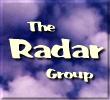











Last update
13 May 2008

This page is maintained by
Mark Fielding
All content Copyright © The University of Reading unless otherwise stated.
 Software
Software
If ever you need to use Chilbolton data you may find the code on this page useful.
Reading Chilbolton NetCDF data
Chilbolton cloud radar and lidar data is now available at the British Atmospheric Data Centre in NetCDF format. It is accompanied by raingauge data in simple ASCII. Here is some documentation:
- Documentation for 94 GHz Galileo radar data
- Documentation for 905 nm Vaisala CT75K lidar ceilometer
- Documentation for drop-counting raingauge
Scanning data from the 3 GHz radar will shortly be available at BADC:
Here is code for reading NetCDF data into some popular data analysis packages:
- load_nc.m - loads variables and global attributes from a generic NetCDF file into the Matlab workspace. To use it you will need to download the free NetCDF Toolbox for Matlab 5/6. Contact Robin Hogan or Julien DelanoŽ if you have any problems.
- plot_scan.m - plots the variables in a scanning radar NetCDF file in matlab. To use it you will need the NetCDF toolbox.
- netcdf.zip - to query, load and plot NetCDF cloud radar data in IDL (provided by Charles Kilburn).
- read_chilradar.pro - to load NetCDF cloud radar data in PV-WAVE (provided by Richard Forbes).
Reading Chilbolton-format radar data, Chilbolton FFT data and Vaisala lidar ceilometer data
Chilbolton radar data is stored in its own unique format that has been extended a number of times over the last few years. This package contains source code for UNIX utilities to read and process both scanning and vertically-pointing data, including utilities to convert to ASCII and NetCDF, and to produce quicklooks in EPS or PNG format (similar to the real-time cloud radar images on this site). There is also a "mex" program for reading data directly into matlab. The ability to read Chilbolton FFT data (Doppler spectra) and Vaisala lidar ceilometer data is also included.
- chil-1.2.28.tar.gz (30 Aug 2006) Warning: this is a beta version
- chil-1.2.27.tar.gz (12 Nov 2004) Warning: this is a beta version
- chil-1.2.21.tar.gz (29 Apr 2004) Warning: this is a beta version
- chil-1.2.17.tar.gz (16 Jan 2004) Warning: this is a beta version
- chil-1.2.tar.gz (11 Feb 2003) Documentation
- chil-1.0.tar.gz (5 Dec 2001) Documentation
- chil-0.8.tar.gz (13 Jan 2001) Documentation
Converting model ASCII data to NetCDF
Data from the Met Office, ECMWF and Meteo France models is supplied to the CloudNET project in different ASCII formats. The cnconversion code converts these various formats into one common NetCDF format.
Contact Ewan O'Connor if you have any problems.
Calculating microwave propagation and scattering parameters
The mwps package contains code to calculate gaseous attenuation (using the Liebe 1985 line-by-line model) and dielectric parameters of liquid water (using the Manabe, Liebe and Hufford 1987 "double-Debye" formulation), as a function of frequency, temperature, pressure and relative humidity. It includes a program for converting ECMWF DDH var files to NetCDF, including calculation of propagation parameters at any frequency specified (up to 300 GHz), although this is now obsoleted by cnconversion above.
- mwps-0.8.1.tar.gz (3 Jul 2003)
Contact Robin Hogan if you have any problems.
Reading Vaisala lidar ceilometer data
- LCload.m (16 Dec 1999) - load lidar ceilometer data into matlab (much slower than the MEX file in the code above, and with no data cleanup).
- ceil.pro (16 Dec 1999) - load lidar ceilometer data into IDL + pretty graphical front end. (Provided by RAL for the CLARE'98 experiment.)
Plotting 3GHz data using Matlab
The Danplot package allows you to browse and plot 3GHz data using Matlab, and implements some processing of Doppler data in particular. You'll need two files (as well as Matlab):
- dataview.tar.gz - The main Danplot package.
- matlab.tar.gz - A collection of matlab scripts and MEX files, many of them used by the Danplot package above.
Copy dataview.tar.gz into your $HOME/dataview and untar/unzip it. Then read the comments at the top of danplot.m and the file doc/README.ps (or .tex)
